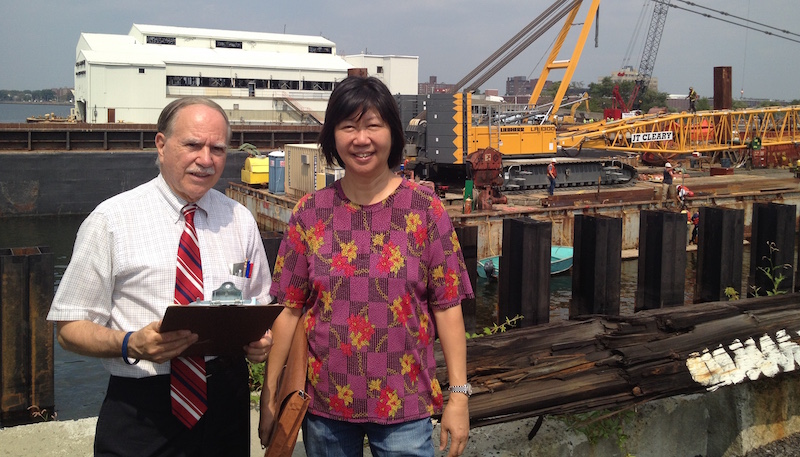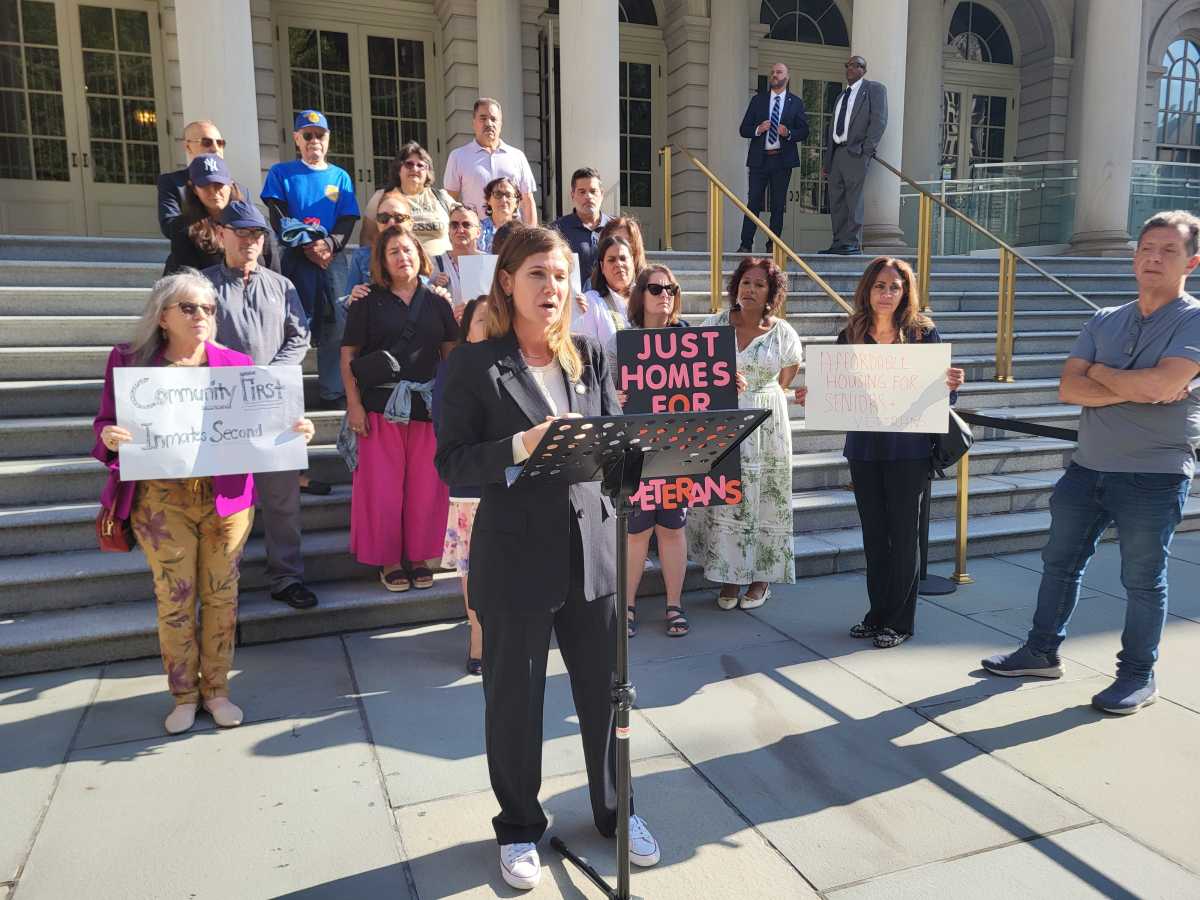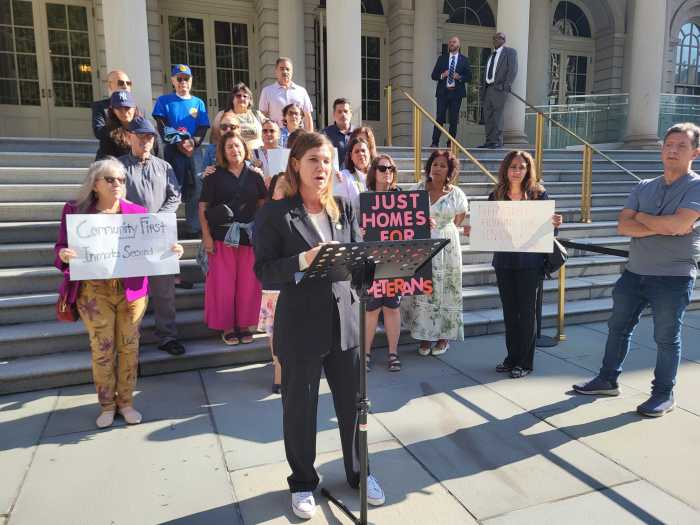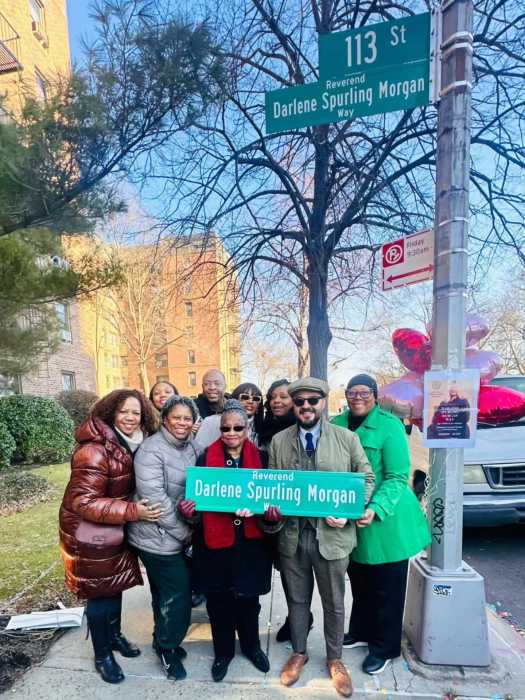Southern Brooklyn lawmakers vowed to continue their fight to keep the planned Southwest Marine Waste Transfer Station from opening despite the city’s announcement yesterday that it inked a 3.3 billion deal with Waste Management to start hauling garbage from the site when it opens next year.
Under the 20-year contract deal, Waste Management will haul some of the city’s garbage via water and rail from both the Hamilton and Southwest Marine Waste Transfer Station to New Jersey starting in 2018.
The contract, which was submitted to the Comptroller last week, is the final long-term waste export contract of the City’s 2006 Solid Waste Management Plan (SWMP), a comprehensive, long-term plan to equitably and sustainably collect and dispose of New York City’s municipal solid waste.

“For far too long, a few communities in the five boroughs have been saturated by waste transfer stations and resulting truck traffic. We are taking a huge step in shifting the burden away from those communities. When these stations are fully up and running, overburdened communities will breathe easier knowing 200 fewer trucks per day will be carrying trash through Brooklyn,” said Mayor Bill de Blasio.
The SWMP was created to dramatically reduce truck traffic associated with waste collection and hauling in neighborhoods historically overburdened by waste processing infrastructure, including North Brooklyn, the South Bronx and Southeast Queens.
The opening of the Hamilton Avenue Marine Transfer Station later this year will redirect approximately 1,600 tons of refuse per day and 200 DSNY trucks per day from private land-based transfer stations in environmental justice areas in Brooklyn, including 780 tons per day and 100 trucks per day from North Brooklyn alone. The Southwest Brooklyn Marine Transfer Station will further redistribute the burden of waste when it opens in 2018.
A number of Brooklyn lawmakers – mainly those representing Norther Brooklyn neighborhoods – hailed the signing of the contract.
“For years, communities that are overburdened with waste processing facilities have been advocating for full implementation of the SWMP plan, and these contracts represent a major step toward this goal,” said City Council Member Antonio Reynoso (D-Williamsburg, Bushwick), Chair of the Council’s Committee on Sanitation and Solid Waste Management.“Investment in these MTSs is investment in reducing truck traffic in neighborhoods that do much more than their fair share when it comes to waste processing. This will reduce air pollution, make streets safer, and bring us closer to a more equitable waste system.”

“A few neighborhoods shouldn’t have to bear most of the responsibility of our solid waste infrastructure. This inequitable system has persisted for far too long in historically over-burdened areas like North Brooklyn,” said City Council Member Stephen Levin (D-Williamsburg, Downtown Brooklyn). “I applaud the administration the Mayor for his commitment to taking trucks off the road: on the ground, reduced tonnage and fewer trucks will make tangible health and environmental improvements for all New Yorkers.”
“North Brooklyn has long been burdened with noxious fumes and high numbers of trucks traversing to and fro. While the smells have been reduced with technological advances, the number of trucks has always been a strain on the environment and traffic. The introduction of the Hamilton Avenue and Southwest Brooklyn marine transfer stations will provide my district with much relief. We have supported New York City’s waste for decades and I am know my constituents will be happy knowing that 100 less trucks will be traveling in their neighborhood,” said Assemblyman Joseph R. Lentol (D-Williamsburg, Greenpoint).

But ever since it was first announced, Assemblyman Bill Colton (D-Bensonhust, Bath Beach) has led a bevy of Southern Brooklyn Lawmakers in opposing the Southwest Marine Waste Transfer Station, which is located in Gravesend Bay and is an old Southwest Brooklyn Incinerator site that has long had numerous environmental violations and issues.
This includes upon the incinerator closing, the discovery in its wake of a number of toxic levels of dioxins, lead, mercury, chlordanes and Mirex (an ant killer insecticide). Other environmental problems occurred during the waste transfer station’s construction including toxic sludge dropped into the bay while workers were transporting dredged sediment and soil from the bottom of the bay to different locations.
Most recently the site has unearthed non-friable asbestos containing material (ACM).
“This is a perfect example of government failing to represent the people,” said Colton, who formed an environmental task force to monitor the transfer station and has tried unsuccessfully in court several times to stop it.
Democratic District Leader and Bay Ridge City Council Candidate Nancy Tong, who works in Colton’s office, also vowed to continue the fight to keep the transfer station from opening next year.
“It [the transfer station] is an outrageous example of government indifference and hypocrisy when city and state agencies threaten huge penalties when an oil spill recently occurred on a nearby privately owned site where the private owner immediately reported the incident caused by human error and began measures to control the problem, yet the same city and state environmental agencies not only fail to threaten huge penalties on this nearby garbage station and former incinerator site, owned by the City, but pour billions of dollars of taxpayer money into facilitating its construction,” said Tong.
“As a Council woman representing the district of this ill-fated proposal, I pledge to continue the fight against the opening and operation of this site and I pledge to fight to get the $3.3 billion to operate it to be converted to projects for our overcrowded schools, to build more Universal Pre K programs, to get more affordable housing and to better of the quality of life for all of us,” she added.










